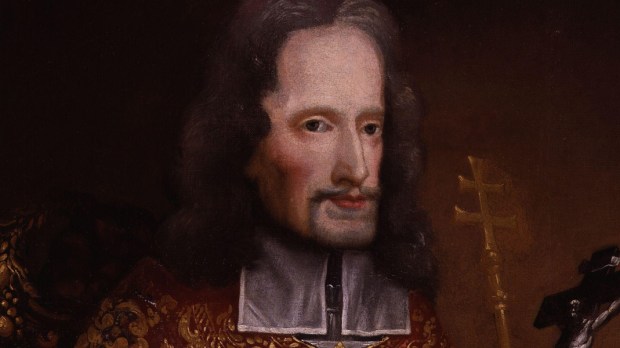Earlier this summer, the record-breaking heatwave in Ireland led to the discovery of a Neolithic henge circle, which was clearly visible in the crops of a farm. Now, the continuing high temperatures may have revealed the location of St. Oliver Plunkett’s childhood home.
The Irish Mirror reports that as the sun scorched the grass of Loughcrew Estate, near Oldcastle in Co Meath, the distinct outline of a building appeared on the ground:
The outline of the house, containing three big rooms and four smaller rooms, with a pathway leading to the church in the grounds of Loughcrew Estate, became apparent during the heatwave.
It was known that St. Oliver grew up on the estate, but over the last 400 years, the exact location of the building was lost. This revelation has excited the current owner of the estate, Emily Naper, who is a direct descendant of St. Oliver.
Naper told the Irish Mirror:
“I’m not an archaeologist by any means but it’s a fair assumption to make that this is the house, especially as the path seems to be linked straight to the church,” she said. “The 1612 civil survey describes the tower house, motte and bailey and ring fort, which are still in the estate. It also mentions the church, a millhouse as well as 60 cabins in the garden, along with what was then the main house. “You can make out three big rooms of the same size and then four smaller rooms at the back which could have been bedrooms. It would be lovely to have the site examined, dated and verified.”
St Oliver was born at Loughcrew in 1625 and ordained a priest in 1654, and later became Archbishop of Armagh. He became the last Roman Catholic martyr to die in England when he was drawn and quartered for treason in 1681.
In 1975, Emily’s grandmother Sheila Plunkett was in attendance at St. Oliver’s canonization. He became the first Irish saint named in hundreds of years.
The National Monuments Service has been contacted about the find and will be conducting an assessment of the site for consideration to be added to the list of protected heritage locations in Ireland.

